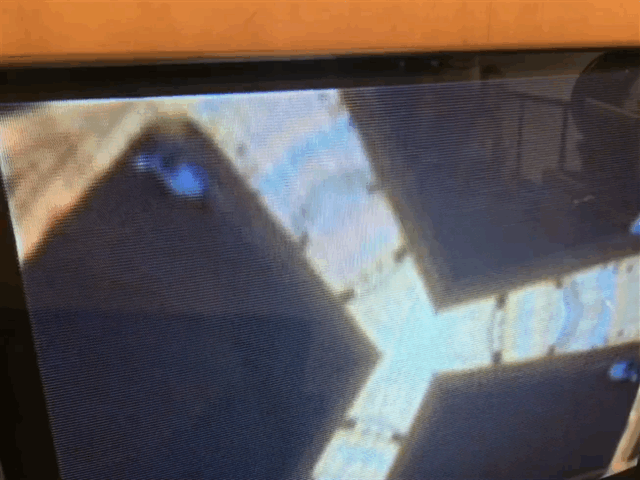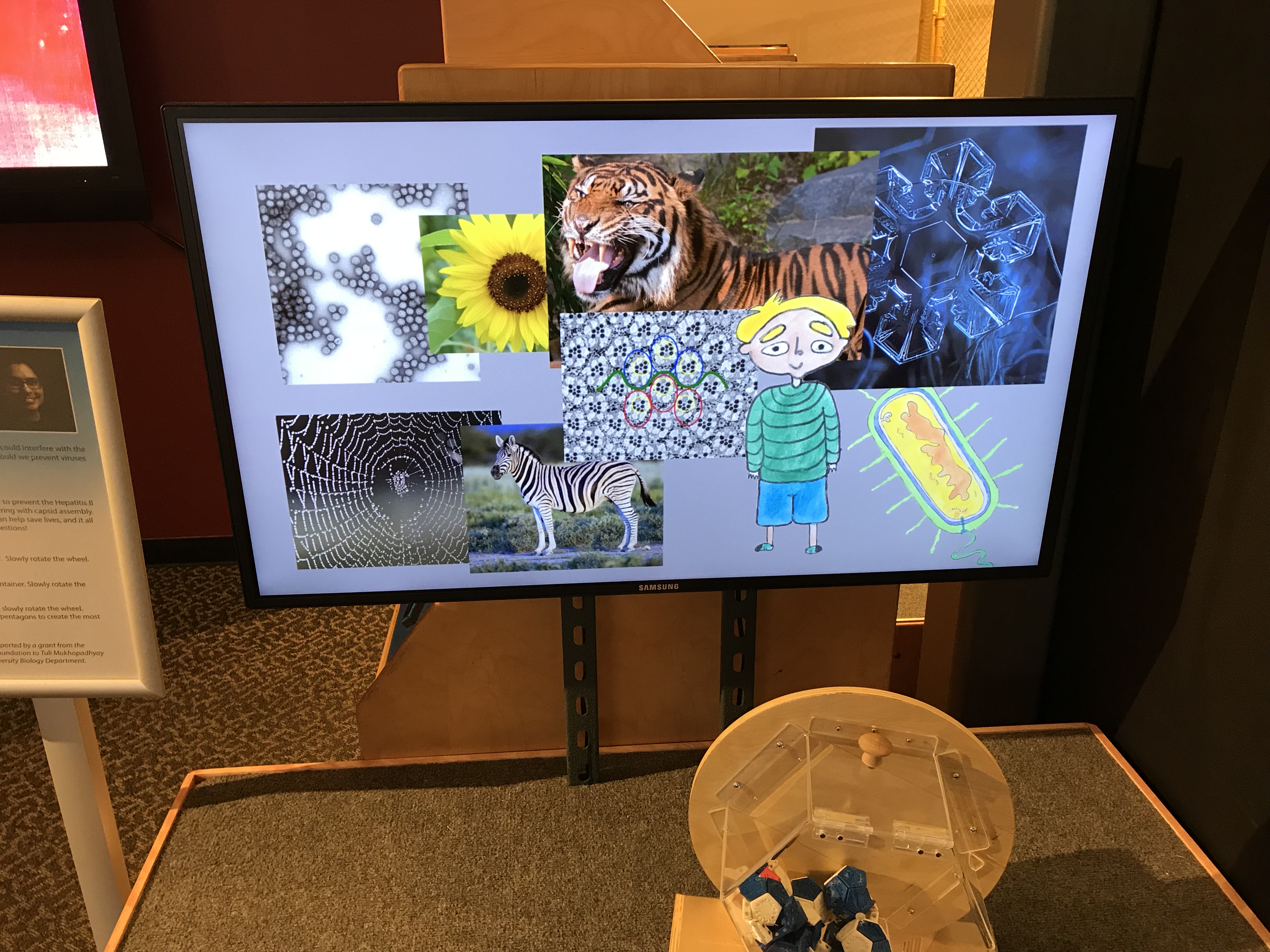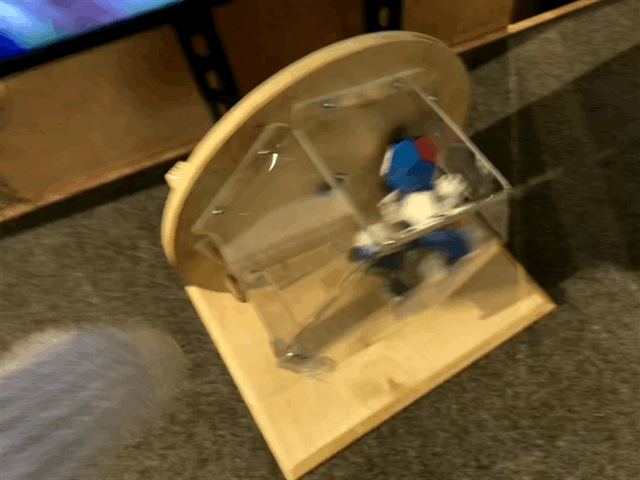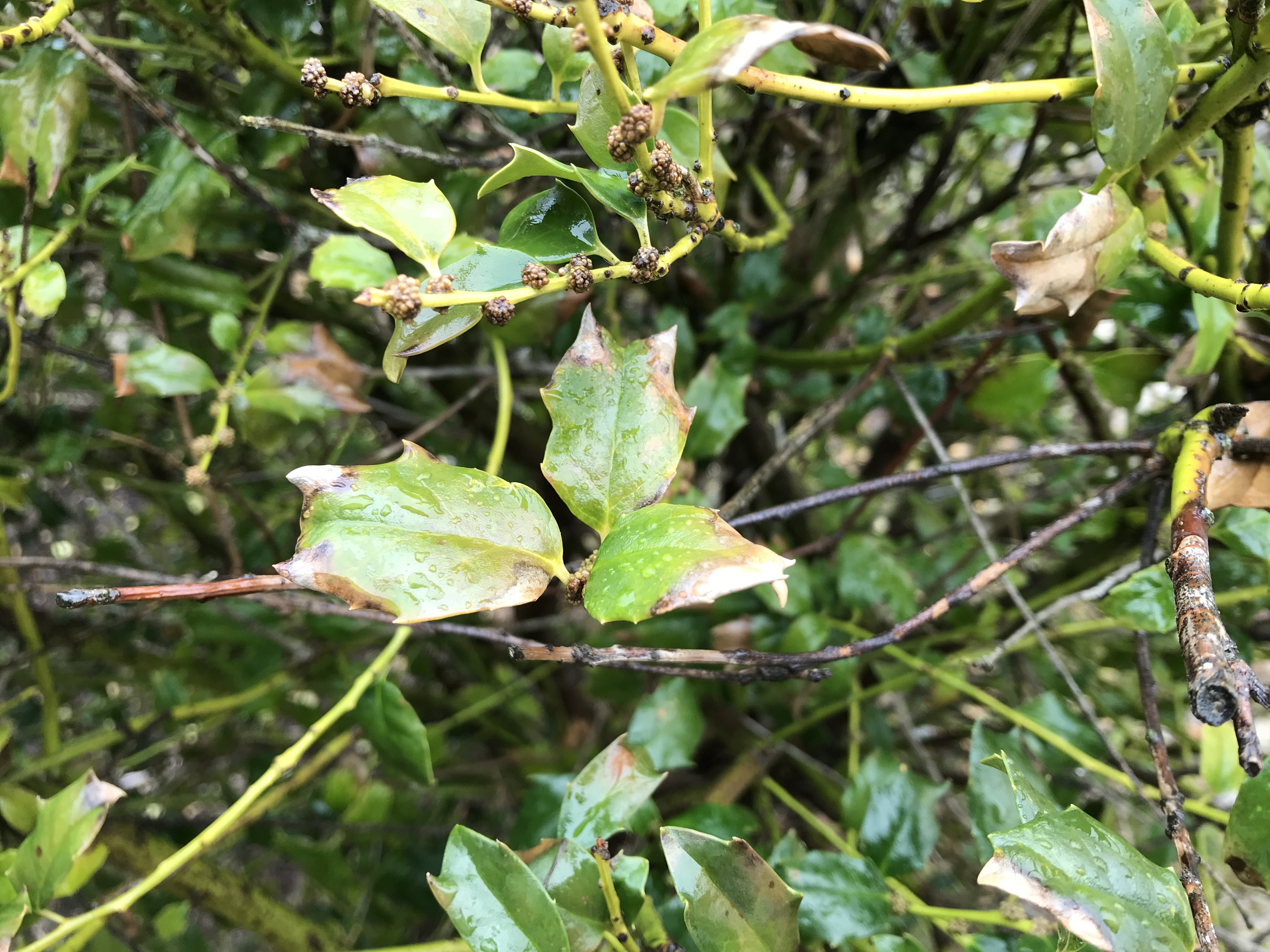There are many miraculous and marvelous things in nature, but one thing that’s always fascinated me is how symmetrical nature can be. WonderLab recently stoked that fascination with a brand new exhibit. On the second floor, conveniently placed near the Video Kaleidoscope 
The Patterns in Nature monitor shows a variety of naturally occurring patterns.
The video is a visual delight showing patterns found in nature. A plastic tumbler teaches a separate-yet-parallel lesson on the changing symmetry of viruses. The tumbler is filled with pentagonal plastic pieces with magnets along their edge. The pentagonal plastic pieces represent virus subunits made up of proteins. The tumbler is a representation of a living cell. Placing the “subunits” inside the “cell” simulates a an infection. Spinning the tumbler simulates the cell’s natural movement. The subunits form together to build models of full-fledged viruses, going from 5-fold symmetry to dodecahedral symmetry a shape found in viruses such as polio.
The spinner in action. The pentagonal magnets inside randomly snap together, gradually transforming themselves into dodecahedrons.
As fun as the tumbler is, it’s the video that captivated me – in part, no doubt, thanks to my father who actually works in an office adjacent to Dr. Mukhopadhyay’s. The video highlights the message that nature is full of patterns, both discernible by the naked eye and microscopic. For instance, viruses utilize symmetry and their assembly is simulated by the spinner, turning one type of symmetry (five-fold) to another type (dodecahedral). The video then lists other examples, like feathers and fossils and scales. It ends by challenging the viewer to go out and find their own examples, and to be mindful of the patterns that naturally exist around us.
I decided to take that to heart and thought about my own experiences with nature. For example, I love spring above all other seasons. The fresh flowers, the smell of mowed lawns that’s been absent for months – even the buzzing of insects around those flowers and lawns. The second spring begins, all I can think is, “Man. Nature is pretty.” Humans tend to appreciate nature in different ways (here are some suggestions for that!), but most I know tend agree that nature’s beauty is beyond compare. Whether it’s the flowers I love or the snow I shoveled a mere few months ago; the crisp fallen leaves underfoot a few months before that, or the vibrant green grass I mowed before that, I know that at some point I looked around me at the natural world and smiled.
I used to marvel at how odd it was for me to love nature when I also loved symmetry. I would look at a tree’s branches and marvel at the lines, but never understood how I could appreciate it when I also had a need for things to line up perfectly. It blew my mind when i realized that these two loves weren’t necessarily mutually exclusive.
A Holly shrub outside of WonderLab has leaves with symmetrical spikes along the edges. The veins in the leaves provide another example of symmetry.
No, the tree branches are not symmetrical to one another – but the closer I get, the more I see that symmetry is not alien to this structure. I think of the flowers: the petals mirror each other nearly perfectly. I look at the insects buzzing around them: their left and right sides are symmetrical. Now I look closer. Insect eyes contain patterns and shapes that are repeated again and again. I look at the snow – if I were to inspect it under a microscope, I’d see tiny ice crystals with six-point symmetry, meaning each of its six sections are essentially the same as the other. The leaves that crunched underfoot and the blades of grass you laid in will all show you the same thing: patterns and symmetry are rampant in the natural world.
The next question that arises is, why? Why is nature so symmetrical? Why are beehives filled with hexagons? Why do ice crystals all have six-point symmetry? The answer is surprisingly simple: it’s convenient.
According to Alan Lightman, physicist and author of the essay The Symmetrical Universe, “Symmetry leads to economy [the careful management of available resources, not the system of spending and obtaining wealth], and nature, like human beings, seem to prefer economy.” He points out that hexagons are the most spacious shapes that can lie flat on a surface without gaps, so beehives have no wasted space. Other shapes, like six-pointed ice crystals, form because it takes the least amount of energy to form in a symmetrical manner.
The Patterns in Nature exhibit teaches that despite the apparent chaos of nature, patterns exist everywhere. This is important, in no small part, because it’s part of what makes science, science. Without patterns to study, rules to understand, the act of researching nature would be impossible. Because things build and break in logical ways, however, humans have begun to understand and even utilize the world around us to make our lives happier, healthier, and even longer. The exhibit pushes guests onto the first step on the path to discovering how the world works.
The Writer: Samuel Zlotnick is 23 years old and is a self-described “scifi/fantasy geek”. He just began an internship at WonderLab in its Marketing/PR department which he feels will compliment his eventual Bachelor’s Degree in Professional & Technical Writing. He loves hiking, though he’s not sure how much pattern-recognition has to do with it.





Leave A Comment